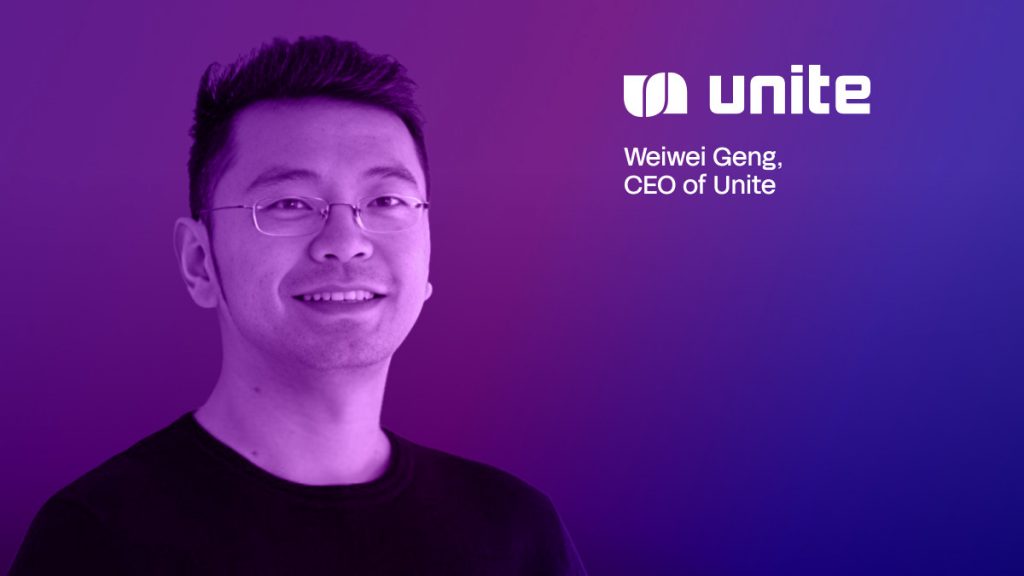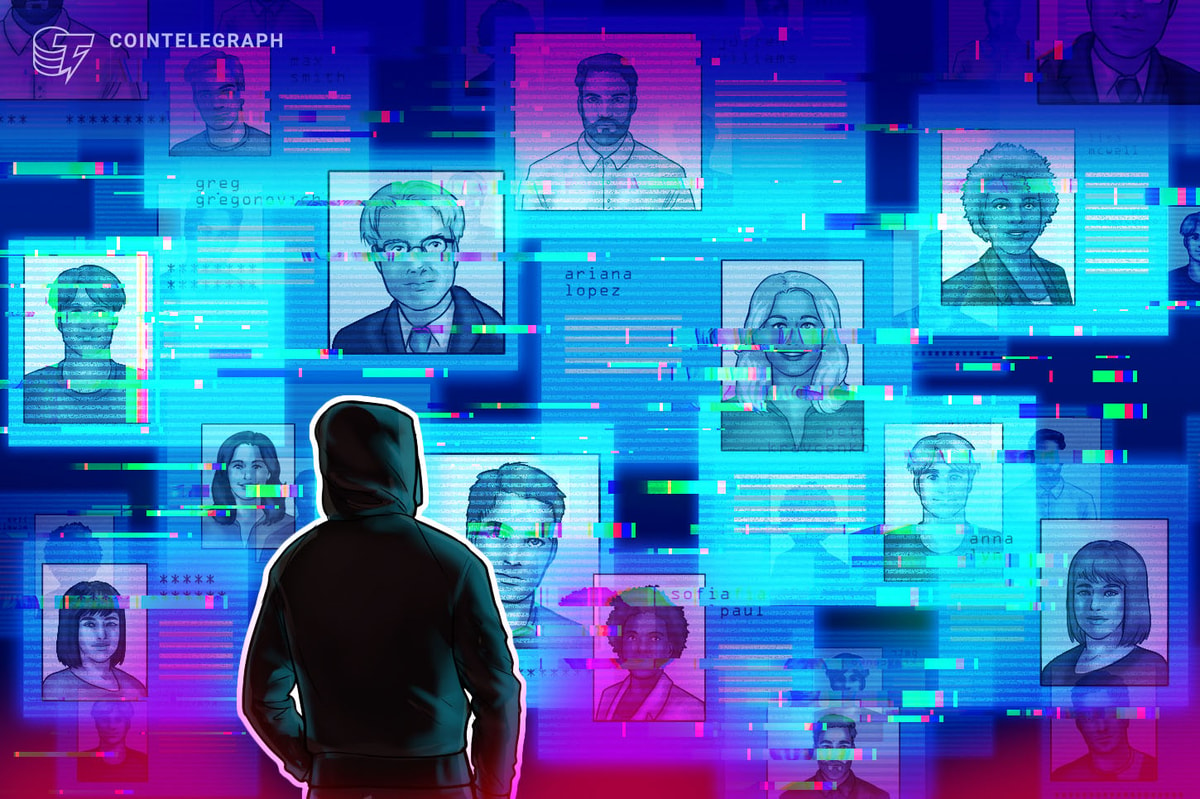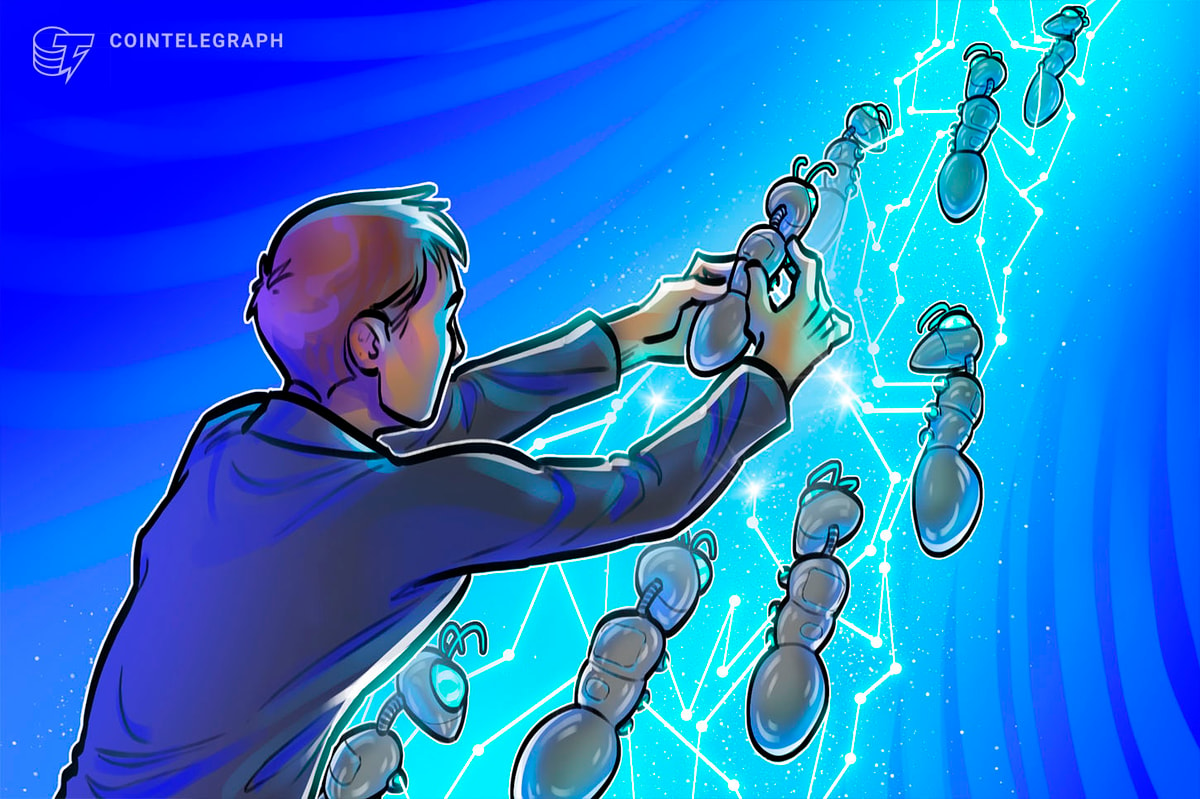

In Brief
Weiwei Geng, CEO of Unite, discusses the platform’s innovative approach to Web3 gaming, focusing on sustainability, scalability, and user experience, bridging the gap between Web2 and Web3.

In this interview, we have a discussion with Weiwei Geng, the CEO of Unite, a Web3 mobile gaming platform. With a rich background in both traditional gaming and blockchain technology, Weiwei shares insights on Unite’s innovative approach to addressing key challenges in the Web3 gaming space. From sustainability and scalability to user experience, Unite is paving the way for a new era of mobile gaming that bridges the gap between Web2 and Web3.
Can you share your journey to Web3?
Before Unite, I was involved in multiple Web3 projects. I was one of the co-founders of a project called Rally Protocol, which is a creator economy platform. I was also involved in an NFT project called Kung Fu Beasts, where I had the opportunity to work with some top celebrities from Asia.
Prior to that, I spent a lot of time in the game industry, building mobile games since 2010. I was working at a company called Kabam, where I led the development of several top-grossing mobile games, including Hobbit: Kingdoms of the Middle Earth and Marvel Contest of Champions for the Asian market. After Kabam was acquired for around $1 billion in 2017, some of the core team members and I started an esports organization called Gen.G, with offices in Korea, the US, and China.
My journey into Web3 started during the early days at Gen.G when we were trying to innovate on how to offer value for our esports fans and players. We explored the idea of designing and building esports player cards, similar to baseball cards, that players could buy, collect, and trade. Since the esports audience is predominantly young and digital, we thought it would be a great fit to build these on blockchain, using ERC-721 tokens, even before the term “NFT” became mainstream.
What is the Unite platform, and what was its main purpose or goal in being created?
Unite is a Web3 mobile game Layer 3 solution built on the BASE blockchain. The purpose of this project is to address some of the fundamental problems faced by Web3 games, particularly on mobile, which we believe is the largest possible opportunity for us to tackle.
The core team has extensive experience in building successful mobile games in the Web2 era, and we believe we can bring a lot of that transferable knowledge to the Web3 space. By incorporating what we have learned over the past five to six years, we aim to build a robust Layer 3 blockchain solution that addresses the key challenges faced by Web3 mobile game developers and players.
How does Unite’s Layer 3 blockchain solution address the challenges of Web3 mobile game development and player experience compared to L1 and L2 blockchains?
We’re trying to address three main challenges with our Layer 3 solution. The first is sustainability. Many Web3 games have followed a “play-to-earn” model, which has allowed players to extract more value from the games or platforms than they create. This inevitably leads to an unsustainable economy that crashes during bearish cycles.
We believe Web3 games need to shift to a paradigm where they build real games that mainstream gamers want to play and are willing to pay for, either through ads or in-app purchases. Our Unite Layer 3 and SDK aim to enable developers to build profitable, mass-market mobile games that can generate billions in revenue to support a sustainable token economy.
The second challenge is scalability. We found that existing Layer 1 and Layer 2 solutions simply cannot support the millions of daily active users (DAUs) that successful mobile games can attract. Our Layer 3 solution, built within the BASE ecosystem, is designed to scale and handle millions, even tens of millions, of transactions and DAUs.
The third area we’re focusing on is the mass-market player experience. Previous Web3 games have required players to go through an onboarding process, connecting wallets and learning about crypto concepts. We’re aiming to provide a frictionless experience where players can just load up the game and start playing, without having to worry about the underlying blockchain operations. The wallet creation, token management, and on-chain activities will be hidden from the player, while they can still enjoy the earnings and rewards from the value they create in the game.
How do you see the overall state of Web3 gaming right now?
Looking at the different iterations or generations of Web3 gaming, from CryptoKitties to Axie Infinity and beyond, I think more and more people are realizing that there needs to be a positive external value input into the system. You can’t just print tokens out of thin air, as that’s not a sustainable business model.
Many games are still operating in that fashion, but there’s a growing recognition that games need to be positively sustainable and able to weather both bull and bear cycles. A deflationary token economy is also becoming an important consideration.
Additionally, I’m seeing more games striving to provide a player experience that is similar to the enjoyable Web2 games that mainstream users are familiar with. So the key areas of focus seem to be sustainability and playability, which is also where we’re focusing our efforts at Unite.
How can developers leverage your specific features and capabilities in their projects?
The first and most straightforward aspect is the wallet creation and token operation. We’ve wrapped this layer of complexity away from the developers, so they can focus on building the games themselves, while we handle the wallet creation and token management behind the scenes.
Secondly, we’ve developed compatibility with various mobile game development frameworks, including React Native, Unity, Cocos, native iOS and Android (Java and Kotlin), as well as Flutter. This allows existing game developers to use the frameworks they’re already familiar with, without having to worry about our specific requirements.
The third aspect is the incentive mechanism. We’ve been building and experimenting with different types of reward and incentive designs, and we’ve templatized the most successful ones. When developers migrate their games to our ecosystem, they can simply pick the reward templates that have proven effective and adjust the parameters to suit their needs. Our team has a lot of experience with designing effective incentive programs, and we’ll continue to innovate and templatize these solutions.
What about cross-chain interoperability? Do you think it’s important in Web3 gaming?
For now, we’ll be focusing on building our own ecosystem and working closely with the BASE blockchain. Many other projects have approached cross-chain compatibility by simply creating a new token on a different chain, but I don’t see a lot of real value in that approach.
In our roadmap, cross-chain interoperability is not a near-term consideration. Our priority is to first demonstrate the effectiveness and strength of the three key areas I mentioned earlier – sustainability, scalability, and mass-market player experience. We want to get those fundamentals right before exploring integrations with other chains.
Ultimately, the real value has to come from factors like better user experience, improved sustainability, or access to a larger user base. Simply supporting multiple chains is a significant investment, so we’ll be very thoughtful and deliberate in our approach to cross-chain interoperability.
How does Unite’s Wallet SDK provide a frictionless onboarding experience for mobile game players?
Sure, the key aspect of our wallet SDK is that we generate a self-custody wallet for the users and securely store the mnemonic phrases on their phones. However, the players don’t have to know or interact with these mnemonic phrases at the beginning.
This allows the users to start playing the game and earning rewards without going through the typical onboarding process of setting up a blockchain wallet, understanding transaction signing, and dealing with fees. All of these blockchain-related complexities are hidden from the player.
We also utilize Relayer technologies to further simplify the process of withdrawing tokens and accessing the earned rewards. From the player’s perspective, it’s just like a seamless Web2 experience, with the underlying blockchain transactions happening behind the scenes.
Additionally, we have what we call a “graduation process” for players. Once they’ve accumulated a certain amount of rewards or stake in the game, say $20 worth of value, we’ll trigger a tutorial to educate them on how to properly extract those values on-chain. But until then, they can continue to enjoy the game and earn rewards in a traditional Web2 fashion, with the option to cash out through gift cards or other means we provide.
If a developer wants to have their game on the blockchain, do they need to build it from scratch on the blockchain, or can they migrate an existing game?
We have already successfully integrated two games onto our UniteChain testnet – Board Button and Mom’s Kitchen. These cases demonstrate that developers can migrate their existing games to our Web3 ecosystem rather than having to build from scratch on the blockchain.
Both of these games initially struggled with the onboarding process and the ongoing costs of gas fees. By integrating with our SDK solutions and migrating to the UniteChain, they were able to restore a smooth, frictionless player onboarding experience and no longer have to worry about high gas fees.
Instead of having to create their own custom infrastructure for wallets and other blockchain-related functionality, these developers were able to leverage the solutions we’ve already developed at Unite. This allowed them to significantly reduce their development costs and time-to-launch, while also improving long-term player retention and enabling more earning opportunities for their games.
What are the key milestones and expected timelines in Unite’s roadmap for the development and deployment of the Layer 3 blockchain mainnet?
We believe Unite’s biggest opportunity is to create the world’s largest decentralized mobile game ecosystem. Our goal is to win the Web3 mass-market mobile games and then expand into other gaming verticals.
We’ve decided to start with mobile casual games because it’s a market with a global player base and potentially billions in revenue. Games like Royal Match have already generated over $3 billion in lifetime revenue, which demonstrates the massive scale of this opportunity.
We’re starting with casual games because the gameplay is relatively easy to iterate and innovate compared to heavier genres like hardcore games or platformers. As we demonstrate repeatable success with our innovations, it will become easier to move into other gaming verticals, both on mobile and beyond.
Once we can prove the effectiveness of our solutions in the casual mobile game space, we believe it will be relatively straightforward to adapt our ecosystem and model to mid-core and hardcore games. The fundamentals, such as the player base, monetization models, and user acquisition, may differ slightly, but the core principles we’re establishing will still apply.
Our roadmap is focused on creating the world’s largest decentralized mobile game ecosystem, and we’re eager to set the benchmark for the rest of the industry as the future of Web3 gaming unfolds.
How can older players, like our parents, who are accustomed to Facebook games, be successfully onboarded to Web3 games?
Absolutely, I believe onboarding older demographics to Web3 games should be a key goal for all developers in this space. In fact, we’ve already had success in this area with our existing games, Board Button and Mom’s Kitchen.
The demographics of our players range from teenagers to 40- and 50-year-olds, both male and female. We’ve designed our games to offer two ways for players to earn rewards – the Web3 way, where they can earn on-chain cryptocurrency, and the more traditional Web2 way, where they can redeem their earnings for gift cards from popular brands like 7-Eleven, Apple, and Amazon.
This allows the non-Web3 savvy players to enjoy the benefits of earning rewards without having to understand the underlying blockchain technology. The user interface is kept smooth and straightforward, so they can easily cash out their rewards as gift cards.
At the same time, for those players who are interested in learning about Web3, we have a “graduation process” that introduces them to the concepts of wallets, tokens, and on-chain transactions, once they’ve accumulated a certain level of rewards.
So, yes, I believe it’s very much possible to onboard older demographics to Web3 games, as long as the experience is designed with their needs and familiarity in mind. Our goal is to make Web3 gaming accessible and beneficial for everyone, regardless of their technical background.
Disclaimer
In line with the Trust Project guidelines, please note that the information provided on this page is not intended to be and should not be interpreted as legal, tax, investment, financial, or any other form of advice. It is important to only invest what you can afford to lose and to seek independent financial advice if you have any doubts. For further information, we suggest referring to the terms and conditions as well as the help and support pages provided by the issuer or advertiser. MetaversePost is committed to accurate, unbiased reporting, but market conditions are subject to change without notice.
About The Author
Victoria is a writer on a variety of technology topics including Web3.0, AI and cryptocurrencies. Her extensive experience allows her to write insightful articles for the wider audience.

Victoria d’Este

Victoria is a writer on a variety of technology topics including Web3.0, AI and cryptocurrencies. Her extensive experience allows her to write insightful articles for the wider audience.
Read More: mpost.io










 Bitcoin
Bitcoin  Ethereum
Ethereum  Tether
Tether  XRP
XRP  Solana
Solana  USDC
USDC  Dogecoin
Dogecoin  TRON
TRON  Cardano
Cardano  Lido Staked Ether
Lido Staked Ether  Wrapped Bitcoin
Wrapped Bitcoin  Hyperliquid
Hyperliquid  Sui
Sui  Wrapped stETH
Wrapped stETH  Chainlink
Chainlink  Avalanche
Avalanche  Stellar
Stellar  LEO Token
LEO Token  Bitcoin Cash
Bitcoin Cash  Toncoin
Toncoin  Shiba Inu
Shiba Inu  Hedera
Hedera  WETH
WETH  USDS
USDS  Litecoin
Litecoin  Wrapped eETH
Wrapped eETH  Polkadot
Polkadot  Monero
Monero  Binance Bridged USDT (BNB Smart Chain)
Binance Bridged USDT (BNB Smart Chain)  Ethena USDe
Ethena USDe  Bitget Token
Bitget Token  Pepe
Pepe  Pi Network
Pi Network  Coinbase Wrapped BTC
Coinbase Wrapped BTC  WhiteBIT Coin
WhiteBIT Coin  Aave
Aave  Uniswap
Uniswap  Dai
Dai  Bittensor
Bittensor  Ethena Staked USDe
Ethena Staked USDe  Aptos
Aptos  NEAR Protocol
NEAR Protocol  Cronos
Cronos  OKB
OKB  Jito Staked SOL
Jito Staked SOL  BlackRock USD Institutional Digital Liquidity Fund
BlackRock USD Institutional Digital Liquidity Fund  Internet Computer
Internet Computer  Ondo
Ondo  Ethereum Classic
Ethereum Classic